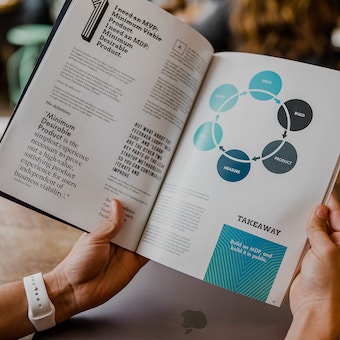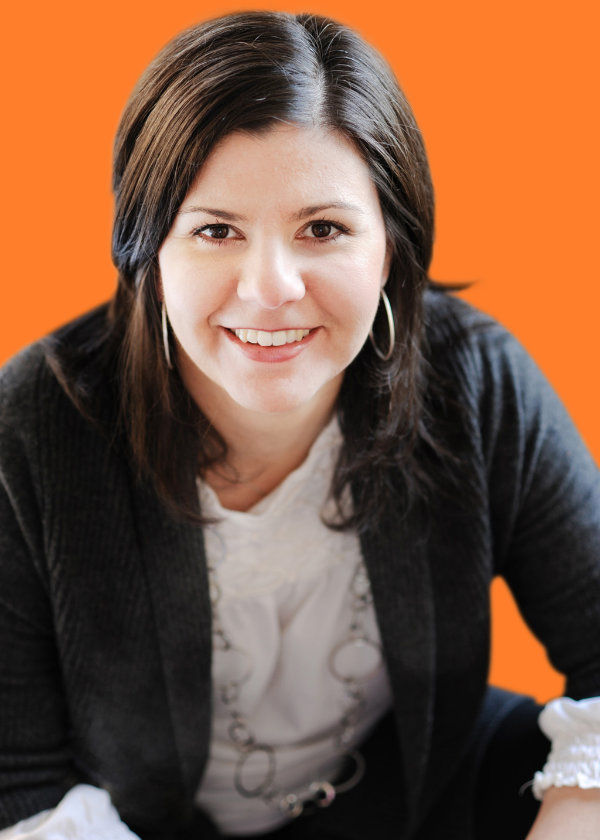Being a business owner comes with the freedom to dictate the who, what, when, where, and how of your life. The power feels illustrious, but being a business owner also has its own set of challenges and obstacles to overcome, and typically they’re the who, what, when, where, and how… Ironic, isn’t it?

With so many decisions to be made, especially as you’re creating a growing business with limited resources (aka hands on deck), how do you accomplish the most and create an effective business growth strategy?
By having business frameworks and repeatable processes.
But why?
The implementation of practical frameworks and processes is not only crucial for streamlining operations and optimizing productivity, but it’s absolutely essential for sustainable growth.
Too often business owners fall into cycles of burnout because they’re wasting time starting from scratch rather than having a clear direction to give them a boost of clarity.
What is a Business Framework?
A business framework is a system of rules that dictate a process or guide strategic decisions. They work in alignment with your business’s values, goals, mission, and vision. Making decisions and solving problems isn’t always the easiest part of business, so having a solid approach to doing so will cut out headaches, internal conflicts, and save you time and money.
While there are many various business frameworks, there are similarities you can find in each one and the one you use will depend on your business, preferences, and needs.
Key Components of a Business Framework
- Goals and objectives
- Market and competitor analysis
- Internal analysis
- Strategy development
- Operational planning
- Risk management
- Performance measurement
- Operational planning
- Continuous learning and improvement
- Control systems
What do some of these components look like within an actual framework? Here are a few examples.
The ever-popular, SWOT Analysis – SWOT stands for strengths, weaknesses, opportunities, and threats
This business framework is great for identifying the strengths and weaknesses of a business as well as looking at market and competitor analysis.
Porter’s five forces were developed by Michael Porter and they are…
- Competitive Rivalry
- Supplier power
- Buyer power
- Threat of substitution
- Threat of new entry
This framework helps analyze the competitive forces in an industry so businesses can make strategic decisions.
OKR stands for “Objective / Key Results,” and it’s a goal-setting method that helps businesses improve productivity and create change. It’s the high-level overview used, so businesses have a chance to think big while being able to track the outcome.
There’s a framework for practically every component in business and it may take some time for your business to find what best works for yours. While implementing business frameworks can take time, they’re going to save you so much time in the long run because once you have them in place, they are repeatable methods you can use over and over again.
Time to get granular – The Power of Processes
While many frameworks help you with big-picture thinking, goals and objectives, and strategies… Processes are what get the wheels in motion.
If frameworks are the what, then processes are the HOW. They are the day-to-day activities that go into making your frameworks mean something.
What kinds of processes can your business implement?
- Sales
- Marketing
- Finance
- Production + Logistics
- Customer service
- Project management
Let’s put one of these into play. Let’s say you run a SWOT Analysis on your business and find one of your weaknesses is your website. It’s not converting as you’d like, and this prompts you to take a look at your marketing process by asking yourself questions like:
- How am I driving traffic to my website?
- How long are people browsing the website?
- What is the bounce rate?
- Is it the copy? The message?
- Does my social media strategy need to change?
If after you’ve run different experiments, you realize your marketing process is secure, and it might be your website design or copy that needs a facelift leading you to take a look at your finances—another process.
This is just one example of how one framework can prompt you to dive deeper into your systems and processes.
As you begin to use these, something amazing happens–you begin to identify holes and spot improvements before they even have a chance to cause any issues. That’s the power of repeatable processes.
Need another example of an effective process?
Let’s take an example of wanting to streamline a podcast on the backend, so you aren’t stressing and scrambling every time you want to publish a new episode.
Having a process is absolutely necessary for a well-oiled podcast. For a process like this, it’s a good idea to use a project management tool such as Basecamp, Asana, or Trello to track the micro-tasks involved. Setting due dates and reminders also ensures you’re not letting anything slip through the cracks.
Here’s a sample podcast process:
Schedule interview → Prep interview questions → Record interview → Send to editor → Upload for transcription → Create show notes + title → Upload to podcast platform → Send email to email list
This is just an example and while this one is pretty simplified, there are still quite a few moving parts to keep track.
Having this process in place also means you are getting it all out of your head, which leads to…
- Saving money: you’ll know exactly what to do every single time which prevents mistakes and enhances your resources
- Saving time: you won’t have to rely on your memory and start from scratch
- Saving you a headache: you’ll have reliable and repeatable systems to reduce confusion and stress
There may be challenges in getting everyone on your team on board, or even yourself if you’re a solopreneur, but the benefits far outweigh the cost of inaction. Just take a look ^^.
The SOULiD Framework
The great thing about running a business is using what resonates and excluding the rest. Maybe there are pieces of each framework or process you like that you can add your own spin to. This is exactly what I’ve done at the brandiD, and I call it the SOULiD framework.
This is the framework I use when wanting to create a transformation for clients.
It stands for Strategize Optimize Utilize Leverage
It’s used to provide clarity and a sense of direction for our client’s businesses that they may have not had before walking through our virtual doors. It lights us up when we see the look of “aha!” on their faces when they realize what it is that truly sets them apart from their competitors and allows them to confidently find their place in their industry.
Hopefully, this gives you the encouragement you need to craft frameworks and processes for your own business, so you can streamline your tasks, stimulate growth, and accomplish your goals.
And if you’d like to learn more about how the SOULiD framework can help your business and develop your brand, our brand strategists are ready to help you.
About The Author
Rachel Gogos is a multi-passionate entrepreneur with a strong desire to help people by creating strong personal brands and businesses. She’s personally launched dozens of books, e-products, and services; and hundreds of products and services with her clients. She started her career at the United Nations headquarters in New York City, where she helped create the look and feel for the organization’s first website.
Today, in her current role running brandiD, Rachel channels over 15 years of marketing and communications experience into each and every website for brandiD’s clients.
And check out her book, Build Your Brand: The Distinctive Guide to Soul-Based Marketing. It will help you uncover your personal brand.
